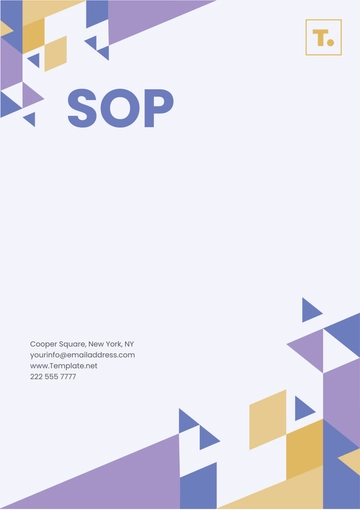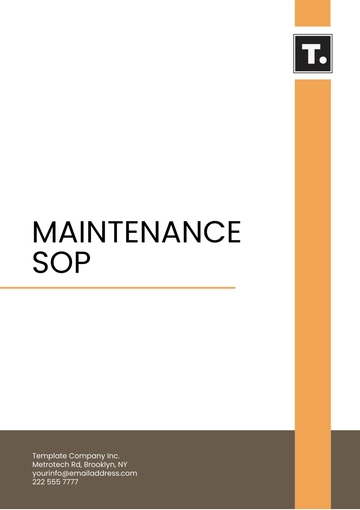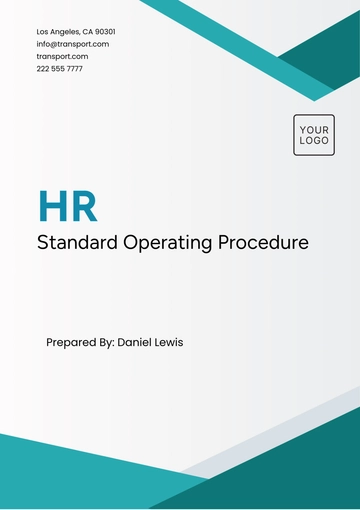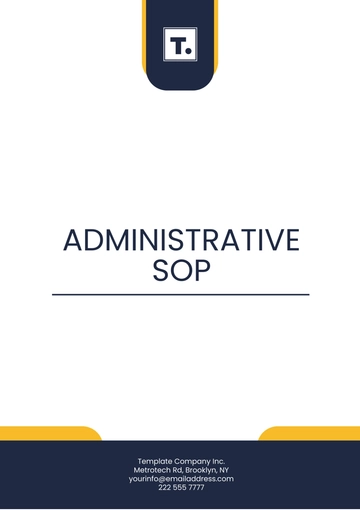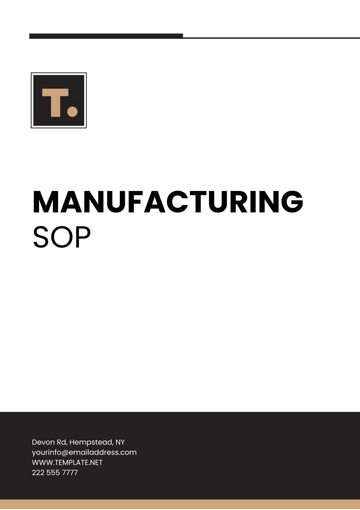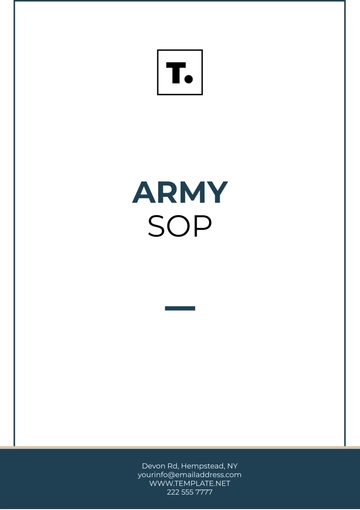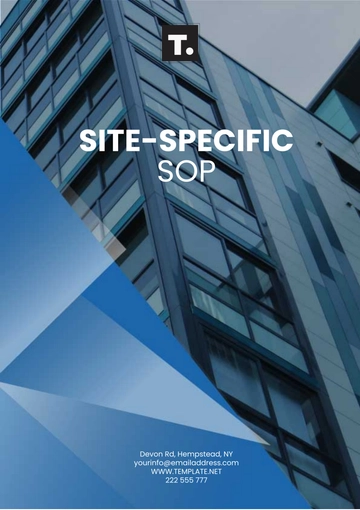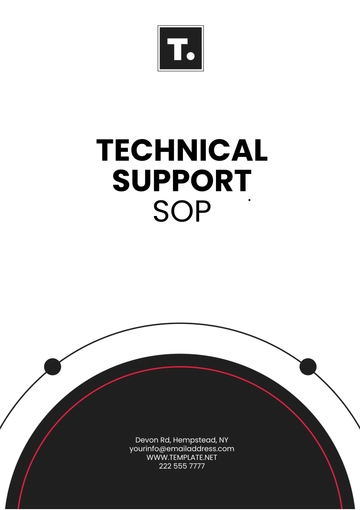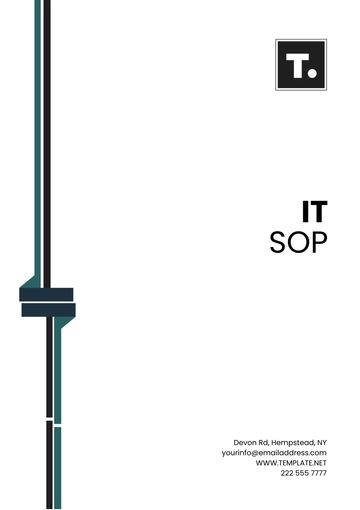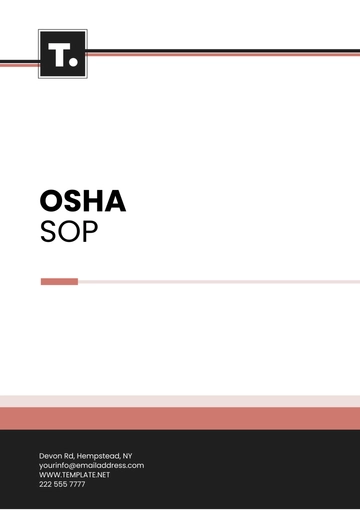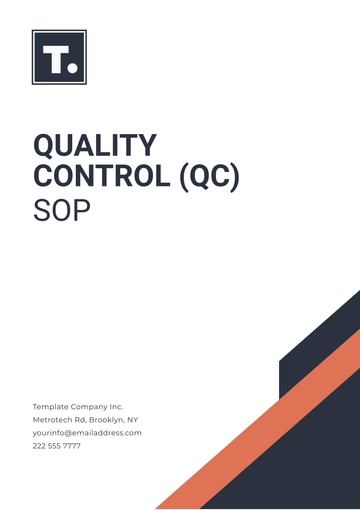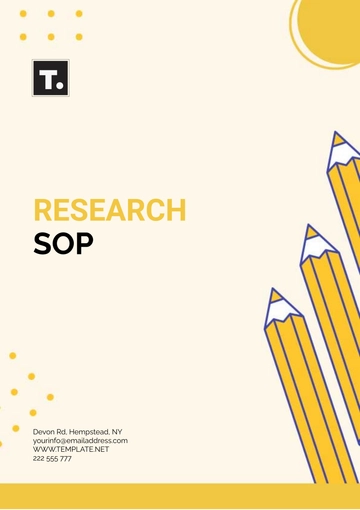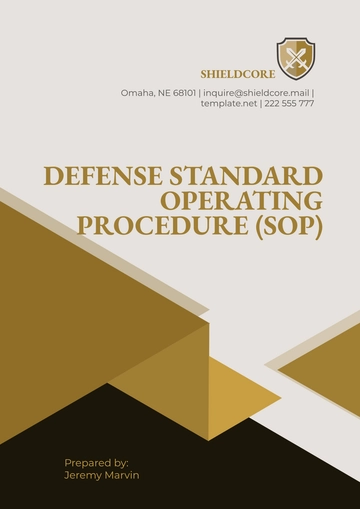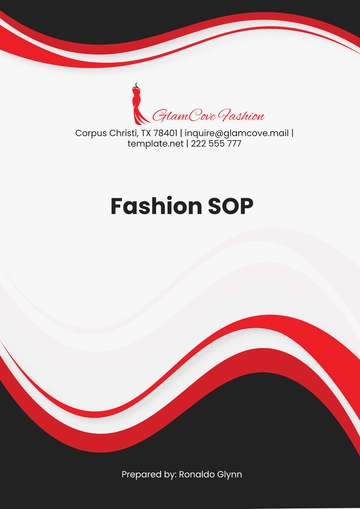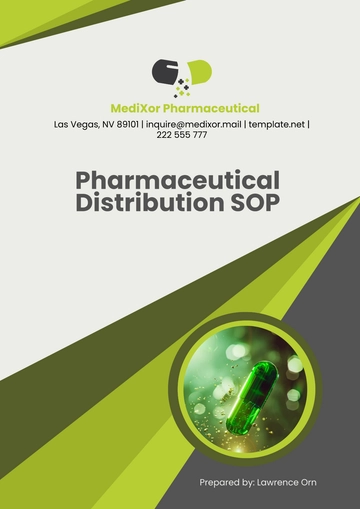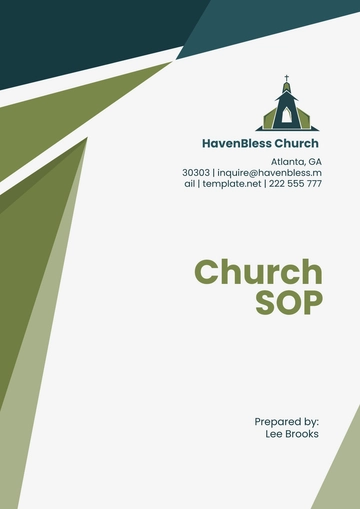Free Pharmaceutical Manufacturing SOP
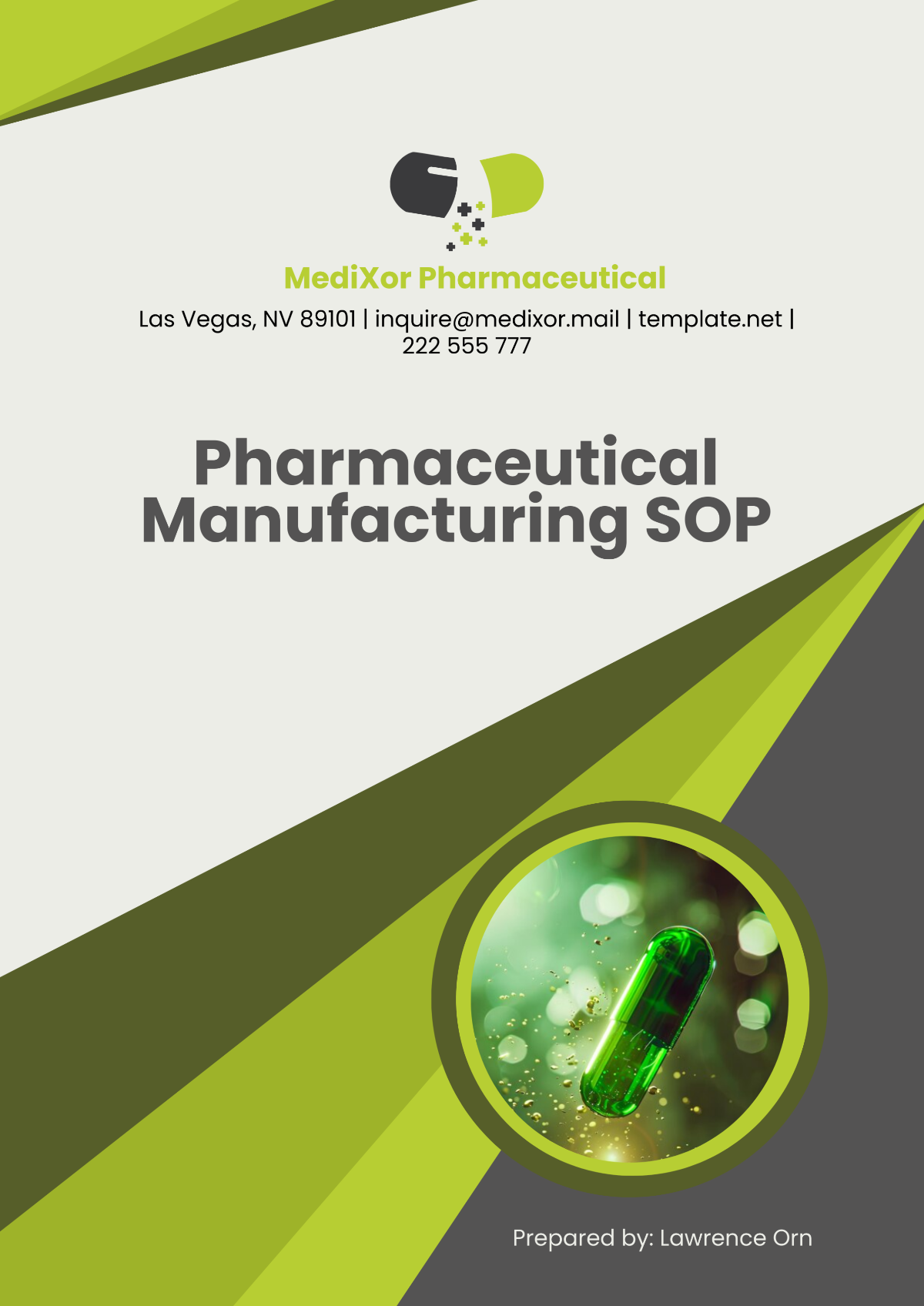
I. Introduction
A. Purpose of the SOP
The purpose of this SOP is to outline the standardized procedures for the manufacturing of pharmaceutical products to ensure product quality, consistency, and compliance with regulatory requirements. It provides clear guidelines for each phase of the manufacturing process. The SOP also serves to minimize risk by ensuring that every step is performed following established industry standards.
B. Scope of Application
This SOP applies to all pharmaceutical manufacturing activities, including raw material handling, formulation, mixing, processing, packaging, and final product testing. It covers all personnel involved in the production process, from operators to quality control teams. The procedures detailed within this document are applicable to all product batches produced in the facility.
C. Overview of Pharmaceutical Manufacturing Process
The pharmaceutical manufacturing process includes several critical steps, such as raw material procurement, material weighing, formulation, processing, packaging, and labeling. Each step in the process is tightly controlled to ensure that the final product meets the required quality standards. The process is governed by Good Manufacturing Practices (GMP) and internal quality standards.
D. Regulatory Framework and Compliance
This SOP adheres to regulatory requirements set forth by the Food and Drug Administration (FDA), European Medicines Agency (EMA), and other relevant health authorities. Compliance with GMP is mandatory to ensure the safety, efficacy, and quality of pharmaceutical products. Additionally, the SOP ensures alignment with industry best practices and standards.
E. Definitions and Terminology
“Batch Record” refers to the document that records all activities and data associated with a specific batch of product produced. “Deviation” is a departure from the established procedure that may affect product quality. “In-Process Testing” includes tests conducted during the manufacturing process to monitor product quality.
II. Roles and Responsibilities
A. Quality Assurance (QA)
The QA department is responsible for reviewing and approving this SOP, ensuring that the manufacturing process complies with applicable regulations and internal quality standards. QA is also tasked with monitoring adherence to the SOP and investigating deviations. Additionally, QA coordinates training and audits to ensure the continued effectiveness of the process.
B. Production Team
The Production Team is responsible for executing the manufacturing steps according to the defined procedures. This includes preparing raw materials, operating equipment, and documenting all steps in the batch record. Production personnel must also report any issues or deviations that may arise during the process.
C. Equipment and Maintenance Team
The Equipment and Maintenance Team ensures that all equipment used in the manufacturing process is properly maintained and calibrated. They are responsible for performing regular inspections and repairs of production equipment. Maintenance logs must be maintained, and any equipment failures must be promptly addressed to minimize production delays.
D. Quality Control (QC)
The QC team is responsible for testing raw materials, in-process samples, and final products to verify that they meet the required specifications. QC also ensures that any deviations from quality standards are documented and addressed. Test results are recorded and must be reviewed before batch release.
E. Safety Officer
The Safety Officer ensures that all health and safety protocols are adhered to during the manufacturing process. This includes monitoring the use of personal protective equipment (PPE) and ensuring compliance with safety regulations. The Safety Officer also conducts safety training sessions and drills for all personnel.
F. Regulatory Affairs
The Regulatory Affairs team ensures that the manufacturing process complies with all local, national, and international regulations. They review and update SOPs as necessary to reflect any changes in regulatory guidelines. They also handle the submission of documentation to regulatory authorities for inspections and audits.
III. Materials and Equipment
A. Raw Materials
Raw materials must be sourced from approved suppliers who meet strict quality and safety standards. Each batch of raw materials should undergo quality testing before being used in the production process. Proper storage conditions, including temperature and humidity controls, must be maintained to prevent degradation of raw materials.
B. Manufacturing Equipment
All manufacturing equipment must be properly calibrated, maintained, and cleaned before each use to ensure accurate production and prevent contamination. Equipment logs must be kept up to date, recording calibration, maintenance, and any repairs. It is mandatory to use only equipment that has been validated and approved for use in production.
C. Packaging Materials
Packaging materials, including bottles, blisters, and labels, must be inspected for integrity and compliance with specifications. Packaging must be stored in a clean, controlled environment to prevent contamination. The packaging process should be monitored to ensure that materials used match the product and that labels are applied correctly.
IV. Manufacturing Process Steps
A. Preparation
Before beginning production, ensure that all materials and equipment are available and in good condition. The manufacturing area should be thoroughly cleaned and sanitized to meet GMP standards. All personnel should wear the appropriate PPE and undergo a pre-operation safety briefing.
B. Material Weighing and Mixing
Materials must be accurately weighed according to the batch record to ensure the correct formulation. Mixing should be performed according to the specified time, temperature, and equipment settings to achieve uniformity. In-process checks, such as sampling, should be performed to monitor the quality during mixing.
C. Formulation and Processing
Formulation procedures must be followed precisely to ensure the correct composition of the product. If any deviations occur, they must be documented and investigated promptly. Environmental conditions, such as temperature and humidity, should be controlled to prevent adverse effects on the product.
D. Quality Control Testing During Manufacturing
Routine in-process testing should be conducted to ensure that the product is meeting specifications. Common tests include checks for content uniformity, moisture content, and physical characteristics. Any out-of-spec results should trigger a deviation report and corrective actions.
E. Packaging
During the packaging process, all products should be inspected to ensure that they are correctly labeled and free from defects. Packaging lines must be regularly cleaned to prevent contamination. A final inspection of the packaged product should be completed before shipment.
F. Documentation and Record Keeping
Each step of the manufacturing process must be documented thoroughly in the batch record, including quantities of raw materials, equipment used, and process conditions. All documents must be signed and dated by the responsible personnel. Completed records should be stored securely and be easily retrievable for auditing.
V. Quality Control and Assurance
A. In-Process Quality Control
In-process quality control involves sampling and testing products at various stages of production to ensure they meet predetermined specifications. Samples are tested for characteristics such as weight, color, and uniformity. If any discrepancies are found, corrective actions should be taken immediately.
B. Final Product Testing
Before release, the final product must undergo a series of tests, including potency, purity, and safety. All tests must comply with the approved methods as outlined in the product specification. The product will only be released for distribution once all final testing has passed and all documentation is complete.
C. Deviations and Non-Conformance Handling
Any deviations from the established process must be documented, with a root cause analysis performed. Corrective and preventive actions (CAPA) must be implemented to prevent recurrence. The deviation report should include a clear description of the issue, the investigation results, and the corrective actions taken.
D. Stability Testing
Stability testing should be conducted on a representative sample of the final product to assess its shelf life. The product should be stored under specified conditions and tested periodically to monitor changes in quality. Stability data is used to determine appropriate expiration dates and storage recommendations.
VI. Safety and Compliance
A. Personal Protective Equipment (PPE)
All personnel involved in pharmaceutical manufacturing must wear the appropriate PPE as determined by the safety risk assessment for each specific task. PPE may include gloves, masks, lab coats, safety goggles, and hairnets, depending on the nature of the operation. It is essential that all PPE be inspected for damage before use, and any defective equipment should be replaced immediately.
B. Environmental Controls
The manufacturing environment must adhere to strict cleanliness standards to prevent contamination. Air filtration systems, such as HEPA filters, must be in place to ensure a clean atmosphere, especially in sterile manufacturing areas. Temperature, humidity, and particulate levels should be regularly monitored and maintained within the specified ranges.
C. Emergency Procedures
Emergency procedures must be established for dealing with incidents such as chemical spills, fires, or injuries. Employees should be trained to respond appropriately to emergencies, and emergency response kits should be readily available in key areas. Fire safety measures, including extinguishers and alarms, must be clearly marked, accessible, and regularly tested.
VII. Change Management
A. Change Control Process
The change control process ensures that any modification to the manufacturing process, equipment, materials, or procedures is carefully assessed and documented. Changes must be initiated through a formal request and subject to risk assessment to determine potential impacts on product quality and compliance. All changes should receive approval from the relevant departments (e.g., QA, Regulatory Affairs) before implementation.
B. Documentation of Changes
Changes must be fully documented, including a description of the modification, reasons for the change, and any expected effects on the process or product. A record of all approvals, including those from the Change Control Board (CCB), should be maintained for future reference. Additionally, any impacted SOPs, batch records, or training materials should be revised accordingly.
VIII. Equipment Maintenance and Calibration
A. Preventive Maintenance Schedule
A preventive maintenance schedule must be established to ensure that all manufacturing equipment is regularly inspected, cleaned, and serviced. This helps minimize the risk of mechanical failure and contamination. Maintenance procedures should be followed as specified by the equipment manufacturer and documented for future audits.
B. Equipment Calibration Procedures
Critical equipment such as scales, mixers, and temperature controllers must be calibrated at regular intervals to ensure accurate performance. Calibration results must be documented, and equipment that fails calibration should be flagged for further investigation and repair. Calibration certificates should be stored in the equipment logbook for record-keeping purposes.
IX. Training and Competency
A. Personnel Training Requirements
All personnel involved in the manufacturing process must undergo initial training on the SOPs and manufacturing procedures before they are allowed to operate equipment or engage in production activities. Regular training sessions should be conducted to ensure employees are updated on new procedures, safety protocols, and regulatory requirements. Training records must be maintained for audit purposes.
B. Competency Assessments
Competency assessments should be conducted periodically to ensure that employees possess the necessary skills and knowledge to perform their tasks effectively. These assessments may include written exams, practical tests, and observation of job performance. Personnel who do not meet competency requirements must undergo additional training and reassessment.
X. Documentation and Record Keeping
A. Batch Records
Batch records must be completed for every batch of product manufactured, detailing all raw materials used, equipment used, in-process testing, and any deviations or incidents. Batch records must be signed by the personnel responsible for each stage of the process and reviewed by QA before release. These records should be retained for the minimum required time per regulatory guidelines.
B. Logbooks and Equipment Records
Logbooks should be maintained to document equipment usage, maintenance, calibration, and any repairs or incidents that occur during the manufacturing process. These records are essential for traceability and accountability in case of product recalls or regulatory inspections. Equipment logs should be reviewed periodically to ensure that all activities are compliant with SOPs.
C. Electronic Records
In facilities using electronic systems for documentation, these systems must comply with 21 CFR Part 11 (or equivalent) for electronic records and signatures. Data integrity must be ensured, with appropriate backups, access control, and audit trails. Any discrepancies in electronic records should be investigated promptly and corrected as needed.
D. Review and Approval of Records
Batch records and other critical documents should be reviewed and approved by designated personnel (e.g., QA or department heads) to ensure that all steps have been followed and that the final product meets quality specifications. The review process must be completed before products are released for distribution. Documentation for any corrective actions or deviations should also be included in the review.
XI. Conclusion
A. Summary of the SOP's Importance
This SOP outlines the essential processes and controls required to manufacture pharmaceutical products that are safe, effective, and compliant with regulatory standards. Adhering to this SOP is crucial to maintaining product quality and ensuring patient safety. It is the responsibility of all personnel to familiarize themselves with and follow these procedures at all times.
B. Continuous Improvement of Manufacturing Processes
Manufacturing processes should be regularly evaluated for efficiency and quality improvement. Feedback from production teams, quality control, and audits should be used to refine and improve the SOP over time. Regular reviews and updates are essential to keeping the manufacturing process in line with the latest industry standards and regulations.
C. References to Regulatory Guidelines and Standards
This SOP aligns with the following regulatory guidelines and standards:
21 CFR Part 210 and 211 (FDA)
European Medicines Agency (EMA) guidelines
ICH Q7 Good Manufacturing Practice guidelines for Active Pharmaceutical Ingredients (API)
ISO 9001 Quality Management Systems
- 100% Customizable, free editor
- Access 1 Million+ Templates, photo’s & graphics
- Download or share as a template
- Click and replace photos, graphics, text, backgrounds
- Resize, crop, AI write & more
- Access advanced editor
Manage your pharmaceutical manufacturing process with ease using the Pharmaceutical Manufacturing SOP Template from Template.net. This fully editable and customizable template allows you to tailor each section to your specific needs, ensuring compliance and efficiency. With the powerful AI Editor Tool, you can quickly update and optimize your SOP to streamline operations and meet industry standards.



